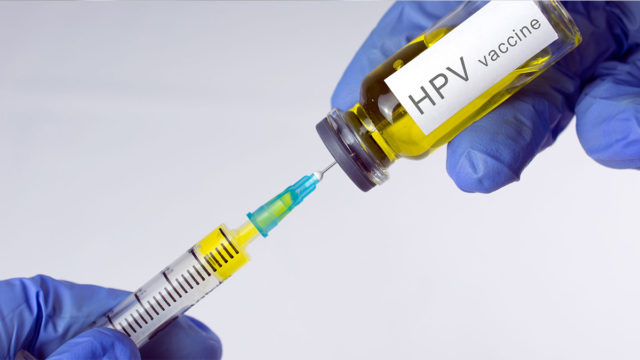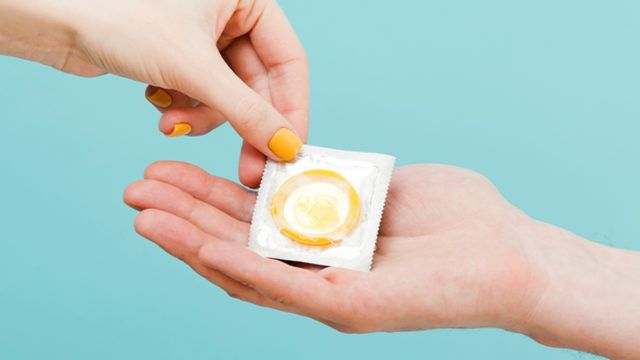It’s 2022, and we can assure you that the misconceptions and lack of awareness around women’s reproductive and sexual health are still aplenty—not just in men but in women, too.
The mere fact that sex-ed and menstrual health ed aren’t part of the core curriculum of schools is very telling about the sorry state of affairs. Add to that the increasing ignorance in formative years, the only sources of information on women’s sexual and reproductive health seem to be either movies, TV shows, or pornography. It’s no wonder that the last five years have seen a massive rise in the popularity of sex-ed and menstrual health educators on Instagram, creating a whole new category of content and set of body-positive influencers that Indian women have been waiting and wanting for so many years.
Interestingly, every year Sexual and Reproduction Health Awareness Day is celebrated on 12th February, around the world.
This year, TC46 chats up Dr Sushma Tomar, Obstetrician & Gynaecologist, Fortis Hospital, Mumbai, to truly create awareness around sexual and reproductive health, from a medical point of view.
1. You Must Get The HPV Vaccine

Most cases of cervical cancers are associated with Human Papillomavirus (HPV), which is a Sexually Transmitted Infection (STI). That is why widespread immunisation with the HPV vaccine can effectively reduce the impact of cervical cancer and other cancers caused by HPV worldwide. Various strains of HPV can spread through sexual contact and lead to cervical cancer. The cervical cancer vaccine is effective in preventing vaginal and vulvar cancer.
The HPV vaccine is given to girls and boys between ages 11 and 12, and sometimes as early as nine years. The best scenario is to provide the vaccine for girls and boys before they have sexual contact and are exposed to HPV. Research has shown that receiving the vaccine at a young age isn’t linked to an earlier start of sexual activity. As cervical cancer spreads through sexual contact (oral, vaginal, or anal), it is best to use a condom every time you have sex. In addition, don’t smoke, as smoking raises the risk of cervical cancer.
2. You Can Either Keep Condoms Or Opt For Female Condoms If Your Partner Isn’t Reliable
The female condom is also called an ‘internal condom’, popularly known as a birth control device. It acts as a barrier to keep sperm from entering the uterus and protects against pregnancy and Sexually Transmitted Infections (STI). Female condoms are also freely available. It is a soft, loose-fitting pouch with a ring on each end. One ring is inserted into the vagina to hold the female condom. The ring at the open end of the condom remains outside the vagina. The outer ring helps keep the condom in place and is also used for removal. The female condom can be used during anal sex, too.
The female condom helps prevent pregnancy and has numerous benefits, which include the following:
- Is immediately effective
- Offers protection from STIs
- Is available without a prescription or special fitting
- It can be inserted for up to eight hours before sex
- It causes minimal allergic reactions and has minimal risk of side effects
- Doesn’t require a partner’s cooperation or an erect penis as the male condom does
3. You Should Only Have Protected Sex

Safe sex is having sexual contact with your partner while protecting both partners from Sexually Transmissible Infections (STIs) and unplanned pregnancy. Unsafe sex may put you or your partner at risk of STIs such as Chlamydia, Gonorrhea, Syphilis, Mycoplasma Genitalium, HIV, or Hepatitis B. Safer sex is also about having sex when you and your partner are ready and having sex that’s enjoyable, respectful, and protected.
Below are 6 steps on how you can practice safer sex:
- Having sex with only one partner when neither of you has any STIs is the safest way to have sex
- Be STI-free by getting tested for common infections. If you have any STI, make sure you follow a treatment plan for the same, especially if you have a new partner
- Avoid sexual contact until the doctor or nurse tells you that you do not have any Sexually Transmitted Infection, and until both you and your partner have been treated
- Communicate with your sexual partner about what you want and enjoy sexually
- Drugs and alcohol may affect your ability to make good decisions, so make sure you refrain from having sex while intoxicated
- Use other types of contraception in addition to a condom to avoid unplanned pregnancy
4. You Should Know Your Options For Pregnancy Termination

The unintended pregnancy rate around the world is very high. In India, it is estimated that the abortion rate is 47 per 10,000 women. This is mainly because information about contraception coupled with the stigma of unplanned pregnancy in teenagers prevents teenagers from reaching out to suitable sources for information. That is why responsible contraception goes a long way in preventing unwanted pregnancies, abortions, and complications.
The most common reason for voluntary termination of a pregnancy is an unintended or unwanted pregnancy. Further, abnormalities or malformations of the baby incompatible with life are also reasons for a medically indicated termination.
According to the MTP act of India, it is illegal to terminate a pregnancy beyond 20 weeks of gestation in India, and this is under review and may change soon.
5. You Should Be Aware About Fertility Treatments

Parenthood is a dream for many couples; however, they may not plan a pregnancy, keeping advancing age and issues about infertility in mind. Both unplanned pregnancy and infertility are pretty common in society today.
Traditionally, fertility awareness was considered knowledge of female anatomy and physiology and its application to family planning. A major factor responsible for delayed childbearing and increasing incidence of sub-fertility is the lack of awareness about fertility potential. Whether, when, and how to conceive should be an individual or couples’ choice, but an accurate understanding of reproductive facts is a prerequisite for informed fertility-related decision making.
Currently, awareness about fertility is relatively low, not just in India but around the world. Many societal changes have occurred in India in the last five decades. While earlier there was a trend of early marriage and having a first child at less than 25yrs, now there is a delay in parenthood among many couples due to greater interest in education, job and financial settlement. Most women now plan their first pregnancy after 30yrs of age.
As in other developing countries, having children is the social norm in India, while childlessness is socially stigmatized. Infertility has a profound effect on women’s psychological and social well-being, much more than men.
6. Both Sexual Partners Should Get Tested

The best time to talk about getting tested for STD is before a person starts having sex (including oral sex). Getting tested with a new partner is super important and one of the best ways to prevent STDs. Getting tested for STDs isn’t about cheating or not trusting your partner. Many people can have an STD for years and not know it as they do not display any symptoms, and that is why testing is the only way to tell if someone has an STD. So, getting regularly tested makes sense for sexually active people.
7. You Should Schedule Regular Gynecologist Appointments

A Gynecologist treats patients with female reproductive organs, whether or not they identify as women. They are trained professionals within the healthcare industry and are capable of treating a girl or woman at any age. The best period to start seeing a Gynecologist is 13-15 years. Building a relationship with the doctor enables a girl or woman to be more comfortable asking questions about menstruation, sexuality, and reproductive health. It also becomes easier to treat them when they share information about the symptoms they might be experiencing.
PS: Make sure you provide an honest account of your health concerns and lifestyle as it gives the Gynecologist a better idea of your situation and enables them to help you more.
8. You Need To Take Charge Of Your Birth Control

Birth control, also known as contraception, is designed to prevent pregnancy. Birth control methods may work in several different ways.
- Preventing sperm from getting to the eggs: These methods include condoms, diaphragms, cervical caps, and contraceptive sponges
- Keeping the ovaries from releasing eggs that could be fertilized: These methods include birth control pills, patches, shots, vaginal rings, and emergency contraceptive pills
- IUD devices are implanted into the uterus. These can be kept in place for several years
- Sterilisation: This method permanently prevents someone from getting pregnant or from being able to get someone else pregnant
The choice of birth control can be different for different women and is based on several factors. These include the person’s health, how often they have sexual activity, how many sexual partners they have, and whether they want to have children in the future. A health care professional like a Gynecologist can help a person/couple select the best form of birth control.
9. You Should Keep Your Weight In Check
Being either underweight or overweight overly affects the chances of a person getting pregnant. In males, being overweight, when there is more body fat, can cause the testicles to be exposed to extreme body heat and affect the sperm count. In females, being overweight or underweight affects the ovulation process and increases the risk of miscarriages. Therefore, to conceive quickly and give birth to a healthy baby, both males and females need to maintain healthy body weight.
10. You Should Always Observe Menstrual Hygiene Practices
The menstrual cycle is the monthly process of discarding blood and tissue from the uterus that typically begins in girls during their pre-adolescence and ends with menopause. This is not just a biological process but a social one and has significant social & economic implications on all women. However, it is observed that many adolescent girls and women do not have access to the correct scientific facts and hygienic practices during their menstrual cycle, which may affect their health negatively. Poor menstrual hygiene management can have a severe impact on both a person’s physical and mental health. Understanding how your period works, why it happens when to expect it, and how to manage it are critical factors that can help a person manage their menstrual cycle.
Here are a few of the essential practices that you need to be aware of to maintain good menstrual hygiene during a menstrual cycle.
- Don’t keep the pad on for more than four hours: When you’re active during the day, your body’s menstrual flow is usually heavier. The pad absorbs more blood, sweat, and sebum and is a breeding ground for bacteria. So, it is advised to not wear one pad for more than four hours a day. However, when you are asleep, your bodily functions slow down, and the bleeding intensity decreases, so you can safely wear a pad overnight
- Wash properly: The discharged blood creates a favorable environment for bacteria, so rinsing the genital area at least twice a day is recommended. The organisms cling to your body even after removing your sanitary napkin. However, don’t wash your vagina and vulva too thoroughly. This can throw off your pH balance, leaving you more susceptible to Yeast infections and bacterial vaginosis.
- Track your period regularly: Don’t avoid tracking your period. Your menstrual cycle is an essential indicator of your overall health.

